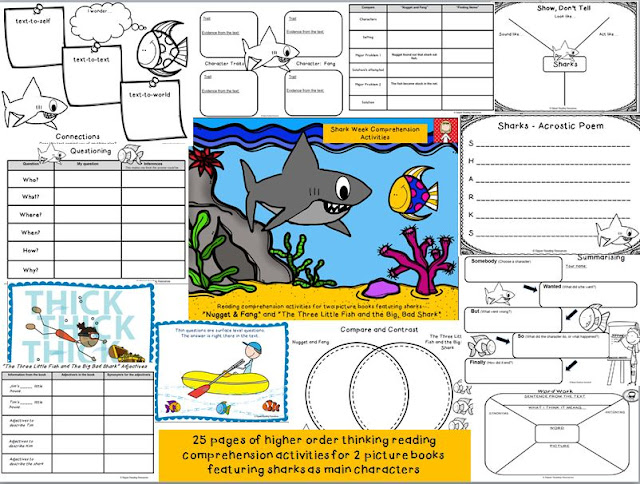It is so exciting to be able to share with you today. My name is Jill Richardson.
Do you need
another way to build excitement and enjoyment of learning for your students? Try pairing fiction and non-fiction
texts. Most of my career has been in
teaching reading in the primary grades.
This year I am teaching English as a Second Language and loving it!
Pairing
fiction and nonfiction texts is an authentic way to integrate Language Arts,
Science and Social Studies. It can
provide the bridge our ELL’s need as well as benefiting all students. It is a great way to build vocabulary and show children the same words in different genres. It helps the children to make connections with the world and themselves.
I participated in a Book Study this year on
Rigor is Not a Four-Letter Word. In the book, Barbara Blackburn talked
about how pairing the two builds rigor.
I thought I would incorporate it more with my students. Wow, my students and I loved it! It helped to build my excitement because I
could pick some of my favorite classic books to experiment with and the
children loved connecting the two because of their natural curiosity. We had so much fun!
I used what I had in my room as my first
pairing. One of my groups was reading at a guided reading level H so I chose, The
Goat in the Chile Patch by Lada Josefa Kratky and Goats are Great by
Alyse Sweeney (a Reading A to Z book). I
would suggest you pick a fiction book that you enjoy and look for a non-fiction
pairing.
Here is a
list of Pairings that Scholastic suggests and others that I added.
Wonderful Worms by
Linda Glaser
Bats by Gail Gibbons
Snowy Weather Days by
Katie Marsico
Recycle That! by
Fay Robinson
A Picture Book of Harriet Tubman by David A. Adler
New York City by
David F. Marx
Ducks! by Gail Gibbons
Verdi
by Janell Cannon
Pythons: Fun Facts & Pictures For Kids by
Lilly Carle
Here are a
few tips to help you get started. I have included photographs from my classroom
for visual support.
1.Pre-teach
vocabulary words. (3-5 words)
Choose words
that are in both the fiction and nonfiction texts.
Review 1-2
Tier One Words. (Basic words that are commonly spoken.)
Teach 2-4 Tier
Two Words (High frequency words used in many contexts)
Teach 1-2
Tier Three Words (Words that are content related or applicable to a specific
subject.)
2. Complete
a KWL anchor chart or KWL printable on
the subject in which the children are reading.
For example
DucksWhat do you know?
What do you want to find out?
What did you learn?
3. Have the students read the texts. You may choose what best meets the needs of your students.
Interactive
Read Aloud
Partner Reading
Guided Reading
Partner Reading
Guided Reading
4. Have the
children complete a story map or plot summary of the fiction book.
5. Have the
children fill in the KWL after reading the non-fiction text.
6. Complete
a venn diagram or graphic organizer comparing the two texts.
Pairing
fiction and nonfiction provides rigor in your classroom! It enhances your students reading
comprehension, expands their vocabulary, knowledge and interests and builds
great excitement for learning! It is
effective no matter what grade you teach.
You might want to give it a try.
Please enjoy for free: Verdi! Compare and Contrast Verdi with a real Python! (Paired Reading!)
Jill is an ESL teacher in Charlotte, North Carolina. Her love is teaching reading in the primary grades. She has been teaching for over twenty five years in both private and public schools. She has been a literacy teacher for grades K-5, early education director, literacy facilitator, and classroom teacher of Kindergarten, first and second grades.Please enjoy for free: Verdi! Compare and Contrast Verdi with a real Python! (Paired Reading!)
Jill Richardson TPT Jill Richardson Facebook Page
Many thanks Jill. Click on the links above, beside Jill's photo (Jill Richardson TPT or Jill Richardson Facebook Page) to check out other awesome resources and ideas from Jill or to follow her to find out about future projects !








